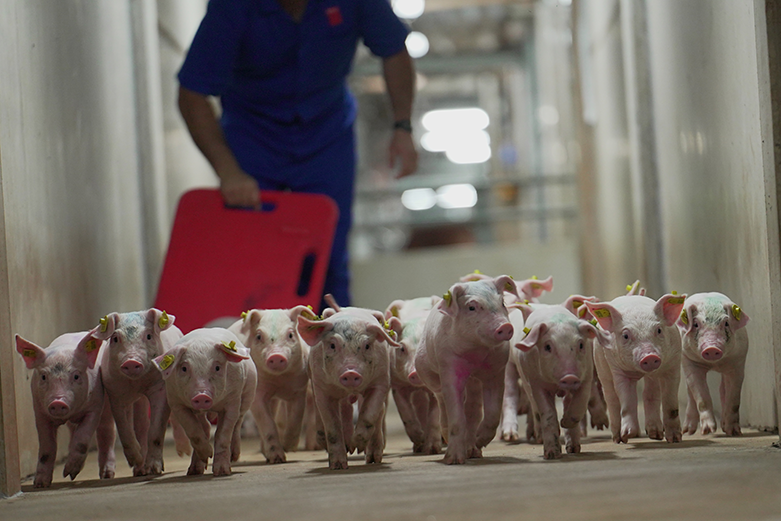Why it matters
In swine production, timing is everything—and when it comes to weaning, the right moment can make the difference between resilience and risk. While weaning may seem like a calendar-based event, its biological, nutritional, and reproductive implications are far-reaching.
As producers face pressures to increase output, reduce antibiotics, and manage prolific sows, optimizing weaning age becomes a high-value decision point—one that balances economic goals with animal welfare and long-term herd health.
How weaning age affects performance across the system
1. Biology Over Tradition: The Shift from 21 to 28 Days
Historically, weaning at 21 days became standard due to disease control strategies, especially in response to PRRS and the rise of Isowean systems. However, the industry’s reality has changed, and European legislation requires weaning piglets at 28 days of age. Hyperprolific genetics have led to more piglets per litter, but with lower individual birthweights. Longer lactation is now needed to ensure sufficient development before weaning.
Insight: In field data across multiple data bases, an increase of prolificacy leads to reduced average birth weight per piglet. Early weaning only compounds this weight gap, affecting post-weaning growth, feed intake, and survival.
2. Weaning Before 21 Days: A High-Cost Shortcut
While early weaning can enable higher farrowing room turnover and support disease control, nowadays it is not a possibility in the European region due to regulation, and it comes at a cost:
- Poor uterine involution: Early weaning (<21 days) leads to delayed and incomplete uterine recovery, resulting in longer wean-to-oestrus intervals and smaller subsequent litters.
- Greater environmental and nutritional demands: Noticeably young piglets need advanced heating systems, specialized feed, and intensive care to survive and thrive.
Strategic takeaway: Use ultra-early weaning (5–14 days) only for specific biosecurity programs or genetic transfer—not for routine production.
3. The Benefits of Weaning at 28 Days: Beyond Growth
Weaning at 28 days offers several performance and welfare advantages:
- Higher piglet weights (7–7.5 kg): This translates into faster post-weaning growth and better feed conversion.
- Shorter latency periods: Piglets begin eating faster, with lower rates of diarrhoea and mortality.
- Improved sow reproductive efficiency: Better uterine involution and shorter weaning-to-breeding intervals.
Challenge: Extended lactations require more farrowing spaces—ideally 26–28% of total sow inventory—and efficient nurse sow management.
4. Matching Genetics with Management
Hyperprolific sows challenge traditional systems. More piglets, lower weights, and higher variation demand longer lactations and stricter criteria for weaning readiness.
Best practice: Avoid weaning piglets under 6 kg. Targeting 28 days of lactation improves both piglet quality and sow condition for the next cycle.
5. Partial and Intermittent Weaning Techniques
To better manage sow recovery and piglet weight variation:
- Partial weaning: Removing 1–2 heaviest piglets a few days before full weaning gives remaining piglets better access to teats and reduces sow fatigue. But avoid leaving fewer than 10 piglets to prevent lactation oestrus.
- Intermittent weaning (experimental): Physically separating the sow from her piglets for short periods (2–12 hours/day) allows piglets to adjust to solid feed. However, longer separations (>12h) risk inducing non-ovulatory oestrus.
Caution: These techniques require precise timing and labour—best suited for specialized systems or research use.
Conclusion: Set the Clock to Productivity
Optimal weaning age is not a fixed number—it is a strategic decision tailored to genetics, facilities, health status, and management capabilities. What remains constant is the biological reality: the longer the piglet nurses (up to 28 days), the better prepared it is for the challenges ahead. And the more recovered the sow is, the more fertile, prolific, and consistent she will be in her next cycle.
At PIC, we help producers navigate this balance. With genetics designed for robustness, tools to manage prolific herds, and guidelines grounded in data, our mission is simple: enable producers to make the right decision—at the right time—for every animal.
When producers manage weaning by biology instead of the calendar, they unlock the full genetic and economic potential of their herds.
References
- Magallón, E., Beitia, S., Magallón, P., Roldán, D., & Prieto, P. (2022). El destete en porcino: manejo óptimo y nuevos retos (Parte 4). SUIS Nº 188.
- Oliva, J.E. (2014). Eficiencia en maternidad. Jornadas Fatro.
- Whittemore, C.T. (1993). Science and Practice of Pig Production.
- Muirhead, M.R., & Alexander, T.J.L. (1997). Managing Pig Health and the Treatment of Disease.
- PIC Technical Services (2023). Internal benchmarks for lactation and weaning strategies in hyperprolific herds.




